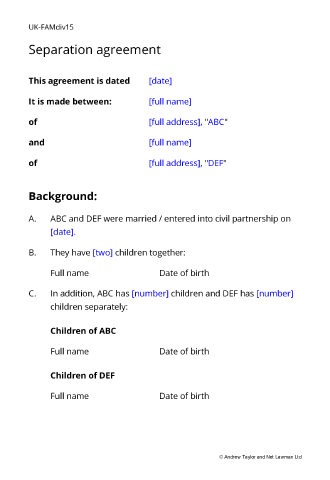
When a marriage ends, one of the most difficult parts is figuring out how to split property, savings, and other valuables. Couples frequently encounter disputes regarding what is fair or legally mandated, and this is where assistance from a Richmond family lawyer can help clarify and make the process just.
The regulations differ by locale, but the fundamental principles remain the same: marital assets are subject to division, whereas separate assets generally stay with the person who possessed them prior to or outside the marriage.
Marital vs. Separate Property
The initial step in dividing assets is to differentiate between marital and separate property. Marital property typically encompasses any possessions acquired during the marital period, including homes, vehicles, retirement funds, or shared savings.
Conversely, separate property can include inheritances, gifts provided to one spouse, or assets possessed before the marriage. Conflicts often surface when separate property merges with marital assets, for instance, using an inheritance to improve a jointly owned property.
Community Property vs. Equitable Distribution
The division method relies heavily on state regulations. In community property states, assets are generally split 50/50 regardless of individual contributions or income differences. In equitable distribution states, the court seeks to allocate property in a fair manner that may not be equal. This might result in one spouse receiving a greater proportion of certain assets to account for income disparities, caregiving roles, or anticipated financial circumstances.
Financial Accounts and Investments
Bank accounts, stocks, bonds, and retirement savings are often some of the most substantial assets to divide. Courts typically consider contributions from both partners, even if one partner earned the majority of the income. Retirement accounts might need a special order known as a Qualified Domestic Relations Order (QDRO) to ensure transfers occur without incurring tax penalties. Investments are also carefully evaluated for current worth, potential appreciation, and inherent risks.
Real Estate and Property Division
The family residence is one of the most emotionally charged properties during a divorce. In some instances, the property is sold and the proceeds divided among the spouses. In other scenarios, one spouse may buy out the other’s portion or hold onto ownership until the children are grown. Vacation homes, rental properties, and land are assessed similarly, with courts factoring in both market value and emotional significance.
Debt Allocation
Asset division is not confined to positive value items; liabilities are also shared. Mortgages, credit obligations, student loans, and car payments are scrutinized to establish accountability. Courts commonly assign debts based on who benefited from them, but shared obligations such as a joint mortgage are usually split equally or proportionately.
Additional Considerations
Courts may also take into account non-financial contributions, like one spouse leaving a profession to care for children, when ascertaining a just distribution of assets. Future earning potential, health, and length of the marriage are additional factors. Couples who pursue a settlement through mediation or collaboration often obtain more adaptable and satisfactory outcomes than those who leave the resolution entirely in the hands of a judge.
Conclusion
Splitting property in a divorce can be intricate, emotional, and lengthy, but grasping how courts generally handle the process aids couples in making informed choices. By clearly defining marital and separate property, adhering to state laws, and addressing both assets and liabilities, spouses can strive for an equitable solution.
While the process may never be straightforward, an organized approach guarantees that